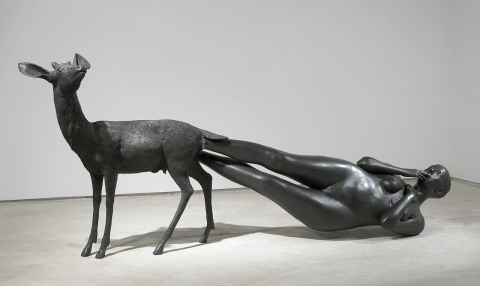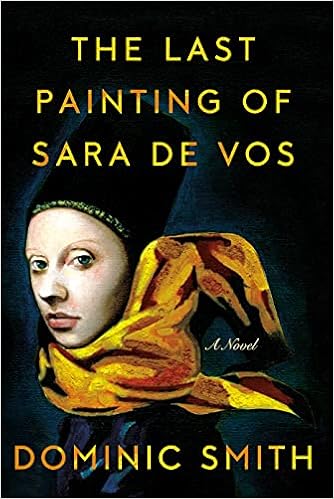Interview with Mary O'Malley for Toi Art Gallery

Mary O'Malley received her Master of Fine Arts degree from the School of Visual Arts in New York City in 2005, and her Bachelor of Fine Arts degree in Painting from the Massachusetts College of Art and Design in 1997.
Her work has been exhibited in numerous exhibitions at galleries and other venues across the US, most notably at the DeCordova Museum and Sculpture Park in Lincoln, MA, the Fitchburg Art Museum in Fitchburg, MA, and Tower Hill Botanic Garden in Boylston, MA.
She has been the recipient of multiple grants, including the Massachusetts Cultural Council Artist Grant, the St. Botolph Foundation’s Grant-in-Aid Award, and the Berkshire Taconic Artist’s Resource Trust Grant. Her work has been featured on Design*Sponge, in Uppercase Magazine, and twice in the publication New American Paintings. Her work is held in numerous private and public collections, including at the U.S. Embassy in Dubai through the U.S. State Department’s Art in Embassies Program.
A Massachusetts native, O’Malley currently lives and works on the Seacoast of New Hampshire.

1. Where did you grow up? How was your childhood?
I grew up just outside Boston, the youngest of four in a working-class family. I have a ton of cousins, so we were always playing with them and other neighborhood kids, and we had a lot of freedom to roam our neighborhood. As the youngest, I would often be tagging along with the bigger kids! I was very quiet and shy as a kid, and drawing and making things was my way of communicating with the world. One of my earliest memories of making was collecting flowers and leaves and branches and making pressed flower compositions. I would also collect old paper towel tubes, cardboard boxes and other scraps and bits and turn them into crafts.

2. Were your parents artists? Did they influence you as an artist?
My mother painted and was always really creative. She sewed, loved interior design and was always rearranging the furniture in our house! We’d come home from school and the living room would be completely different! She dreamed of going to art school, but college was out of reach for her when she was a young woman. So when I expressed interest in studying art, both she and my dad were very encouraging and supportive. I feel lucky, because I know not everyone’s family is supportive of their choice to go to art school.

3. What/who inspires you?
My work is inspired by nature combined with a love of decorative arts and all types of ornamentation. In the past several years I’ve become really interested in gardening, and that has informed my work in many ways. Since I’ve learned about flowers, it’s sometimes hard to depict two flowers in a piece that wouldn’t bloom at the same time in nature, for example. I find myself leaning towards depicting real flowers and fauna, but still infusing them with some whimsy and fantasy.
Menagerie 1 limited edition print.
Menagerie 2 limited edition print.
4. Name three favorite women artists.
Kiki Smith, for her deliberate use of materials traditionally associated with craft and ‘women’s work’ and elevating them to fine art. Louise Despont, who makes beautifully intricate and complex drawings on found paper. Petah Coyne, who’s use of birds, flowers and chandelier-like shapes have been an influence on my work.

Kiki Smith -Born
5. Your work combines nature and pattern with rich and decorative details. Do you draw influence from Art Deco or other styles?
Yes, definitely! Art Deco, Art Nouveau, and countless other decorative arts styles. I collect images from many different sources, whether it be decorative arts or nature, and combine all these different elements as inspiration for my work. I’m constantly on the lookout for images that light a spark in me. Something shifted for me in my work when I stopped looking to art history or other artists for inspiration, but started looking at the things that are around me that I’ve always loved. Some of these things, such as decorative arts, fashion, interior design, I felt, as a result of my education, were not serious subject matter for an artist. But once I started embracing these things, my work really became authentically my own.
Menagerie 3 limited edition print
6. How do you work with color?
For me, color is very intuitive. I love working with colors that are found in nature, but with the volume turned up a bit and a bit more saturated than they would be in nature. I also love working with fluorescent colors and gold ink. I don’t plan my palette ahead of time, but combine colors as I work on a piece. I’m always fascinated how one color can completely throw a piece off or make it all work together.
Menagerie 5 limited edition print
7. You imagine worlds characterized by symmetry, which is also found in nature. Tell us more about this.
The inspiration for my work always begins with nature: I’m fascinated by cycles of nature, how things grow, and how things decay and rebound. My work has evolved from being a more abstract depiction of microscopic nature to a more idealized view of nature. I’m interested in fractal geometry and how symmetry and ornamentation is often used to depict the divine. It is hard-wired into our human brains to find comfort and visual satisfaction in symmetry.
8. Your work is depicted on your website as “Boldly decorative and unapologetically pretty, these imagined worlds are characterized by symmetry, bold color and shimmering metallic detail that conjure a fantastical and idealized view of nature.” Is there a connection between your use of nature, pattern and bold colors and the Pre-Raphaelites and in particular William Morris’ conception of decorative art as a more accessible art for all?
I definitely see a parallels between the Arts and Crafts Movement’s disdain for the industrial age and manufacturing and today’s fears around climate change and a renewed interest in the hand-made and craft. I sometimes think of my pieces as being manufactured nature: when we’ve destroyed the earth, where will we find beauty?
9. How is your work routine like?
My process starts out with a lot of drawing. I then take my sketches and digitize them in order to play around with them on the computer to create my compositions. I love working this way, because it allows me to try out so many different ideas in a really efficient way. I can play with scale, mirroring, and repeating motifs so much faster than I could if I sketched everything by hand. It allows ideas to flow really quickly. Once I’m satisfied with a composition, I transfer it to watercolor paper and begin painting by hand. There are always details and parts of the piece that still need to be worked out once I get to this phase of the process, so there are still surprises to be found and challenges to work out.
10. What are you reading?
Right now, I’m reading ‘The Last Painting of Sara deVos’ by Dominic Smith. It is about a fictional 17th century Dutch artist who becomes the first woman to be admitted to the Artists’ Guild. The story jumps between Sara’s life and the life of one of her paintings, as it is stolen, and forged, and then finds its way back to the forger, now a celebrated art historian, and the original owner. It is a glimpse into the life of artists during the Dutch Golden Age, as well as a bit of low-key thriller. In addition to this, I’m always browsing gardening books as I try to learn as much as I can about gardening!
11. What crazy project would you like to do in the future?
I would love to do a really large wall-sized mural!

by Karina Miller
Do you want to ready more? check our Interview with Liz Rowland and
Leave a comment
Comments will be approved before showing up.











